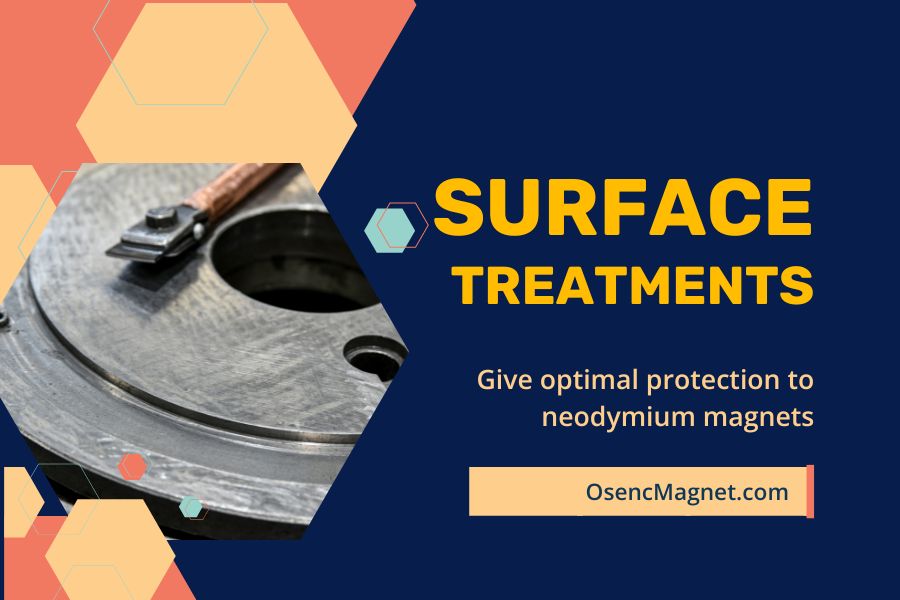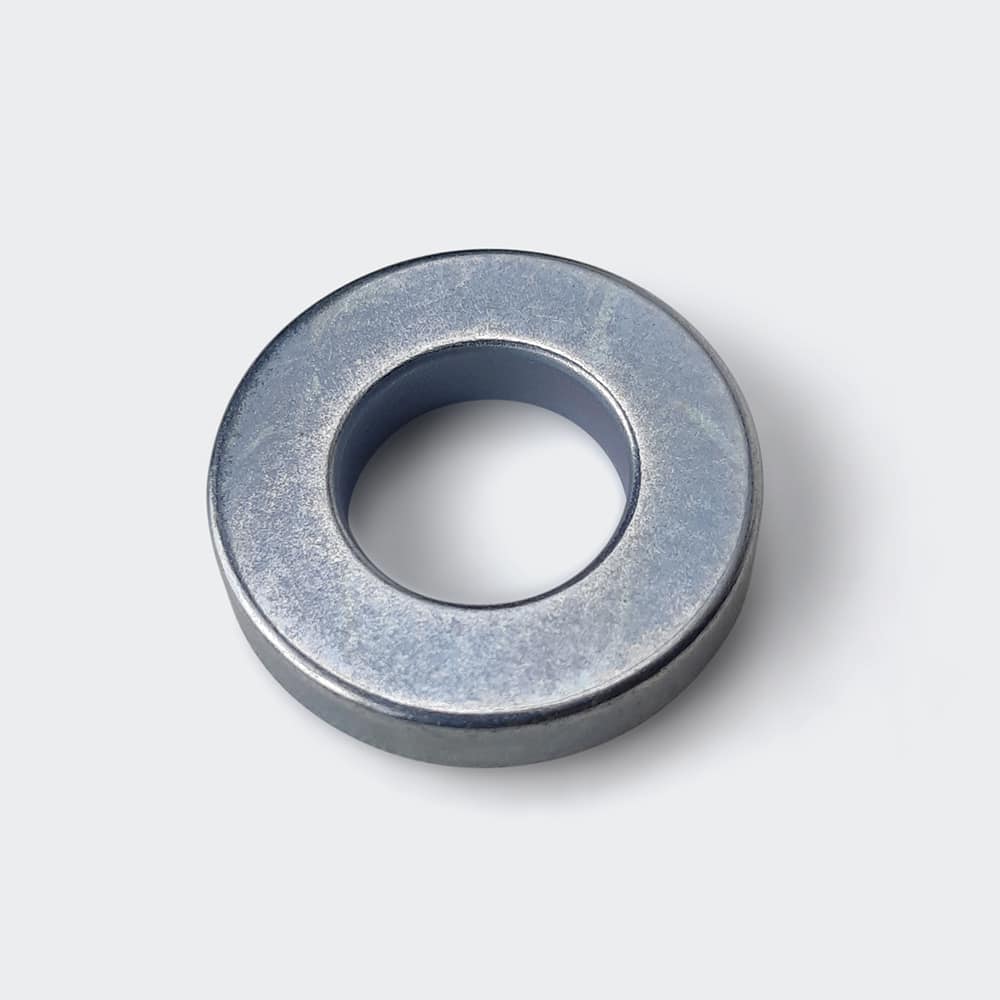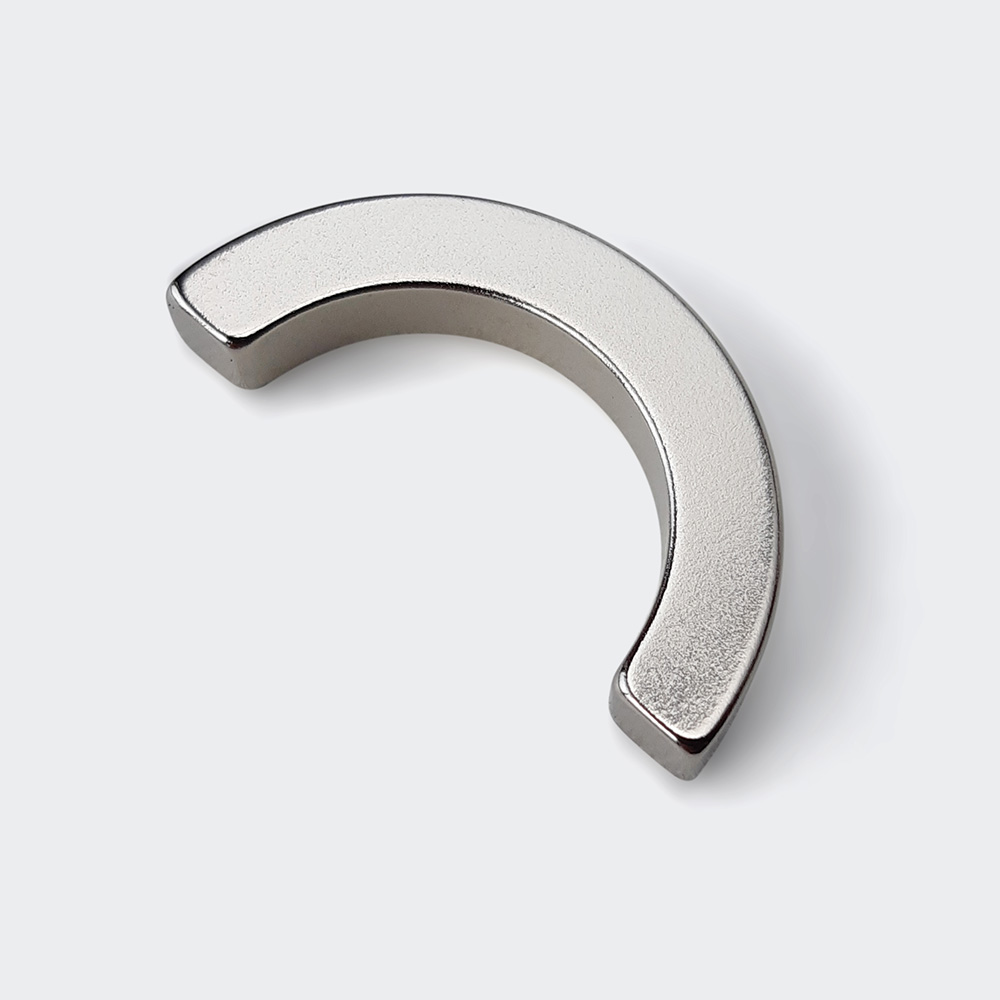This post lists the fundamentals of common surface treatments for neodymium magnets.
It will help you pick the right surface finish from a neodymium magnet supplier.
- Choose right and your neodymium magnets will perform well for decades.
- Choose wrong and their magnetism can rapidly weaken, making them useless.
Use this guide to pick the ideal surface treatment for your custom neodymium magnets.
Why Surface Treatments?
First of all, neodymium magnets themselves have poor resistance to corrosion.
- They can corrode and lose magnetism if without the proper type of surface treatment.
- Even the surface has a needle-sized broken point, the corrosion can spread to the entire piece of neodymium magnet.
Meanwhile, surface treatments can change the features of the original surfaces of neodymium magnets.
And bring them new features and function that the original surfaces don’t have.
- So, neodymium magnets can work properly in the desired conditions.
- For example, neodymium magnets themselves are prone to corrosion.
- If we coat them with a layer of Parylene, they can work with direct contact with water.
There are at least 2 additional purposes of surface treatments for neodymium magnets.
Reduce surface roughness
Another purpose of surface treatments for neodymium magnets is to reduce inherent surface irregularities and create a smoother finish.
- The processes to manufacture neodymium magnets result in a gritty, porous surface with microscopic peaks and valleys.
In some applications, you will need to minimize this surface roughness.
- Premium coatings – PTFE (Teflon) and Parylene – can essentially fill in the cracks and gaps, encapsulating the magnet in a seamless, non-stick film.
- This provides a uniformly smooth exterior surface.
When smoothness, low friction, and cleanliness are important, coatings can offer a simple way to overcome the natural texture of neodymium magnets.
The ultra-thin layers mask surface irregularities.
Enhance decoration
In addition to functional benefits, another purpose of coatings and surface treatments is simply to make neodymium magnets look more attractive.
- The metallic gray, unfinished surface of raw neodymium magnets can appear low-grade or industrial to consumers.
- Visible magnets may detract from a product’s style and perceived quality.
Coatings like nickel, zinc, and epoxy come in silver, black, or colored finishes that “prettify” the magnet’s appearance.
- Smooth coatings also conceal the porous, pitted texture that results from sintering neodymium.
- The seamless finish gives a higher-end look compared to the rough, unfinished surface.
In short, coatings don’t just add function, but also form – the ability to make neodymium magnets fit the look and feel of high-end goods.
Form matches function through enhanced magnet aesthetics.
Zinc Plating
Zinc plating is a process of applying a thin layer of zinc metal onto the surface of neodymium magnets, by using an electric current.
It is the most common and economical methods of protecting magnets from corrosion.
Features
Zinc metal is a well-suited corrosion protective coating for strong magnets.
Zinc plating has many advantages, such as:
- It provides a physical barrier that prevents rust from reaching the underlying metal surface.
- It has a good price/performance ratio compared to other types of coatings, such as nickel or chrome plating.
- It can be modified with different colors, patterns, or textures by adding agents to the plating bath or through post-treatments.
Drawbacks
Zinc plating may not provide neodymium magnet with enough corrosion resistance in wet or high-humidity environments.
Zinc is also chemically susceptible to acids and alkalis.
Finally, there is the challenge of hydrogen embrittlement.
Nickel Plating
Nickel plating is a technique of electroplating a thin layer of nickel onto neodymium magnets.
Applying a nickel coating is a common surface treatment used to protect neodymium magnets from corrosion.
Advantages
Nickel provides several benefits:
- The nickel metal itself is resistant to chemical corrosion, even in acidic environments. It holds up well over time.
- Nickel reacts with oxygen in the air to form a protective nickel oxide layer on the magnet’s surface. This further shields against moisture and oxidation.
- The nickel plating has good adhesion to neodymium, providing a barrier between the magnet and the elements.
- The process for electroplating nickel is relatively straightforward and cost effective.
For general anti-corrosion needs, nickel is an accessible and adequate option.
Drawbacks
- Cost: Nickel plating can be more expensive than other coating options, such as zinc plating. This can be a disadvantage for applications where cost is a significant factor.
- Limited Corrosion Resistance: While nickel plating provides a protective barrier against corrosion, it may not be suitable for highly corrosive environments. In such cases, other coatings like zinc or gold may be more effective.
- Brittleness: Neodymium magnets are brittle, and the application of a coating like nickel can increase the risk of cracking or chipping[6]. This can be a disadvantage in applications where the magnet is subjected to mechanical stress or impact.
PTFE Coatings
PTFE coatings are a type of non-stick coating that are made of polytetrafluoroethylene, a synthetic fluoropolymer of tetrafluoroethylene.
PTFE coatings have many applications in various industries, such as cookware, automotive, cabling, optical, pharmaceutical, and more.
Features
- High temperatures: PTFE coatings can function correctly in various temperatures, typically up to 240°C260°C, which is significantly greater than the operating temperatures of neodymium magnets.
- Chemical resistance: PTFE coatings are resistant to many chemicals, making them suitable for use in harsh chemical environments.
- Low coefficient of friction: PTFE coatings have a low coefficient of friction, which can be useful in applications where the magnets need to slide or move easily.
- Water resistance: PTFE coatings are waterresistant, which can be useful in applications where the magnets will be exposed to water or other liquids.
- Wear resistance: PTFE coatings are known for their great resistance to abrasion and corrosion, which can help protect the magnets from damage.
Drawbacks
- PTFE coatings are very soft and can be easily scratched or worn off by abrasive materials or tools. This can reduce the non-stick performance and the lifespan of the coating and the product.
- PTFE is not a cheap polymer and its production requires special equipment and techniques.
Parylene Coatings
Parylene has a significant reputation for their unmatched reliability and durability.
It is a superior surface treatment for neodymium magnets.
Make sure to use this technique if your magnetic application requires:
- Corrosion resistance, low friction, non-stickiness, and thermal stability, etc.
Advantages
Excellent surface protection: Offer unmatched thermal, chemical, moisture, and environmental barrier properties.
Truly conformal: Coat surfaces of neodymium magnets evenly.
- Including sharp points, deep crevices, and hard-to-reach areas.
- Will not pull away from corners or edges.
Ultra-thin: Can be as thin as 0.5 microns.
- Ideal for micro magnets which are tiny and require high precision.
Biocompatibility & biostability: USP Class VI Compliant, can be sterilized, and has been approved by the FDA for use in the human body.
Drawbacks
- Higher cost: Parylene coatings are more expensive than most other conformal coatings, such as acrylic, epoxy, silicone, or urethane. The deposition process and the nature of the raw materials used in manufacture/application contribute to the cost.
- Parylene application requires specialized equipment and technical expertise, only a limited number of factories and facilities around the world can apply it. This means buyers may have fewer options when it comes to sourcing neodymium magnets with Parylene protection.
Inspecting Coating Quality
Here is a brief introduction about how we can inspect the quality of the coating or plating layer on neodymium magnets to verify its integrity:
- Visual Inspection – Check the coating with your eyes under natural light, or under a fluorescent lamp with an illumination equivalent to 40W for defects like bubbles, peeling, uneven coverage, discoloration, stains, etc.
- Thickness Testing – Measure the coating thickness to ensure it meets specifications.
- Drop Testing – Drop magnets to check coating durability (Mainly for zinc coatings).
- Cross-Cut Testing – Checks adhesion by cutting into the coating (Typically for nickel coatings).
- Thermal Shock Testing – Cycles magnets between extreme temperatures to test coating endurance.
- Pressure Testing – Applies high pressure to simulate real-world conditions.
- Salt Spray Testing – Exposes magnets to a salt fog environment to validate corrosion resistance.
- Humidity Testing – Prolonged exposure to high humidity verifies coating performance.
Coatings and Magnetic Strength
Any separation between the actual magnet and the object in front of it results in a reduction of the magnet’s strength.
This is particularly evident when non-metal coatings like rubber or plastic are preferred.
Unlike metal coatings such as nickel, which help transmit the magnetic field, rubber and plastic maintain a degree of separation between the magnetic field and the target object.
So, how much strength is lost due to coating?
To calculate the strength loss, the inverse square law can be applied, which states that the force of a magnet is inversely proportional to the square of the distance from the source.
In simpler terms, the strength of a magnet diminishes rapidly, even with slight increases in distance.
In an in-house study, we measured a magnet’s force from 1 millimeter away and then repeated the measurement from 2 millimeters away.
We found that this small increase in distance resulted in a fourfold reduction in the magnet’s strength.
Another way to grasp this concept is to consider that when you are in direct contact with a magnet, you experience 100% of its force.
However, when you move just two inches away, the magnet’s strength drops to 10%. Clearly, proximity plays a crucial role.
What should you look for in a coating?
When maintaining maximum strength is a priority, opting for a metal-based coating, such as nickel, is advisable. However, larger magnets may require multiple layers of coatings for physical protection, often including an inner nickel layer, followed by a copper layer, and then an outer nickel layer.
Keep in mind that these additional layers introduce some distance from the magnet, resulting in a slight reduction in overall strength.
If you require a waterproof, non-slip, or colorful coating, plastic or rubber coatings are suitable. However, the challenge lies in the consistent separation between the magnet and surrounding objects. When using plastic or rubber coatings, you might need to employ a larger magnet than usual to compensate for the strength lost due to the coating.
Conclusion
What Do You Think?
Now I’d like to turn things over to you:
- Which surface treatment from this list was best for you?
- Or maybe you have some ideas that I didn’t cover here.
Either way, let me know and fill the contact form below.



